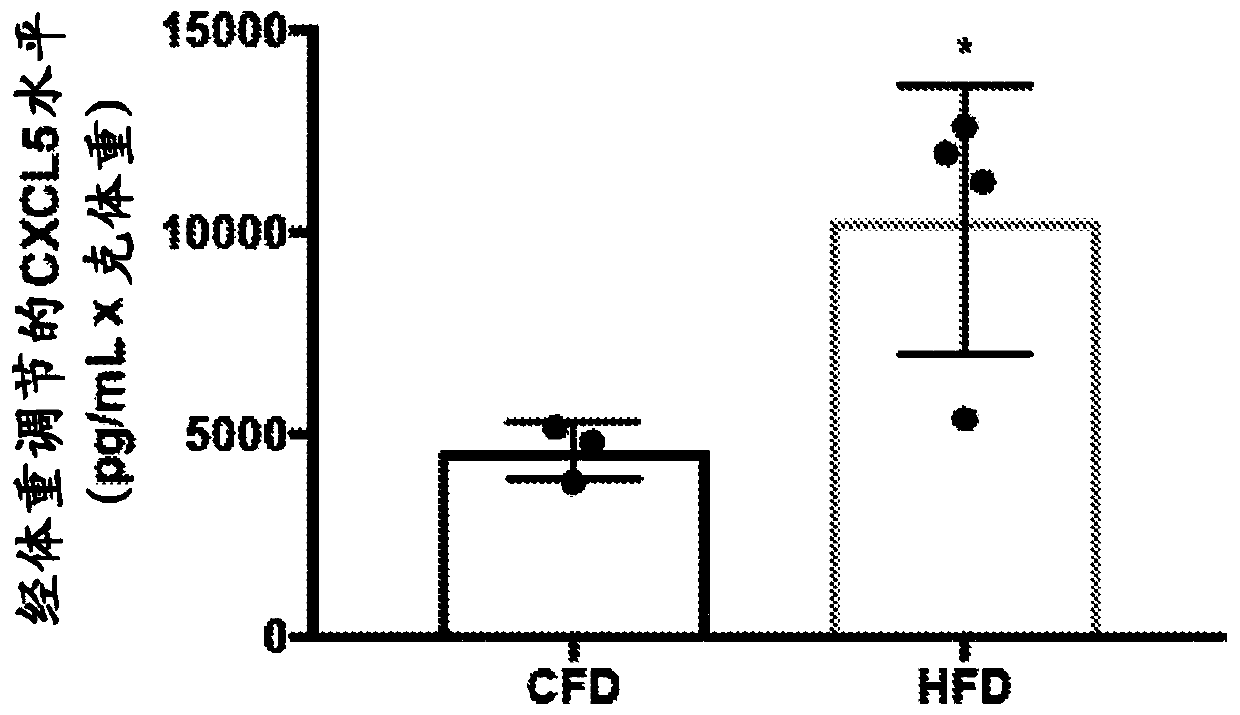Serologic assay for silent brain ischemia
A symptomatic and cerebrovascular technology, applied in the field of serological determination of asymptomatic cerebral ischemia, can solve the problems of no cerebrovascular health diagnostic test, increased long-term consequences, and limited use
- Summary
- Abstract
- Description
- Claims
- Application Information
AI Technical Summary
Problems solved by technology
Method used
Image
Examples
Embodiment 1
[0105] Example 1: Significant changes in microvascular complexity and endothelial cell gene expression in mice with metabolic syndrome Change
[0106] This example describes the effects of metabolic syndrome on the brain microvasculature and reveals the molecular mechanisms regulating these changes. The syndrome in mice strongly mimics the human condition marked by obesity, elevated cholesterol and impaired glucose tolerance. This cluster of symptoms greatly increases the risk of stroke (especially asymptomatic stroke) (6-fold). Asymptomatic strokes damage the white matter of the brain and lead to disability, dementia and death.
[0107] method
[0108] Transgenic mice (Tie2-Cre:flox-stop tdtomato plus flox-RiboTAG) were fed 60% kCal from a fat diet to induce metabolic syndrome. Subjects were fed a high-fat diet for 12 weeks at 2 months of age, and 10% kCal from the fat diet was used as a control. Cerebral vasculature volume in white matter assessed by reporter gene ...
Embodiment 2
[0114] Example 2: Immunoassay of Markers of Cerebral Endothelial Vascular Injury
[0115]This example uses an obese mouse model that produces the 'metabolic syndrome' described in example 1. Using new transgenic mouse technology using this obese mouse model, we have identified a series of molecular indicators of the early cerebrovascular damage that occurs in the context of obesity and these common metabolic disorders. Many of these genes encode proteins that are secreted in the blood and thus can be used to indicate early brain blood damage
[0116] This led to the development of a multipoint enzyme immunoassay (EIA) assay for secreted molecules indicative of brain endothelial vascular injury in the endothelial dataset described herein.
[0117] method
[0118] Patient plasma samples were serially diluted and pipetted into individual wells of a microtiter plate. Novel antibodies raised against 5-10 of our unique obesity-induced brain endothelial genes are primarily lab...
Embodiment 3
[0127] Example 3: Development of Markers for Brain Endothelial Vascular Injury
[0128] This Example describes studies leading to the identification of novel brain endothelial biomarkers for small vessel cerebrovascular disease (SVD). Obesity, hypertension, hyperlipidemia, and diabetes all increase the incidence of white matter damage and synergistically promote altered signaling within the brain microvasculature. However, the precise molecular pathways activated by these chronic conditions in the brain microvasculature remain unknown. To address this knowledge gap, a novel translational approach was used to identify cell-specific transcriptional profiles of the brain endothelium within white matter in a mouse model of obesity / metabolic syndrome. Using RiboTAG transgenic technology, in which major ribosomal proteins are genetically modified with hemagglutinin antigens, combined with cell-specific Cre-loxP transgenic modeling, it was possible to isolate transcriptional profi...
PUM
 Login to View More
Login to View More Abstract
Description
Claims
Application Information
 Login to View More
Login to View More - R&D
- Intellectual Property
- Life Sciences
- Materials
- Tech Scout
- Unparalleled Data Quality
- Higher Quality Content
- 60% Fewer Hallucinations
Browse by: Latest US Patents, China's latest patents, Technical Efficacy Thesaurus, Application Domain, Technology Topic, Popular Technical Reports.
© 2025 PatSnap. All rights reserved.Legal|Privacy policy|Modern Slavery Act Transparency Statement|Sitemap|About US| Contact US: help@patsnap.com



